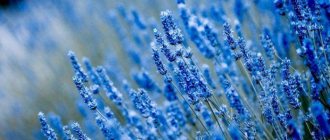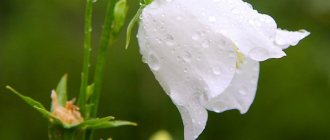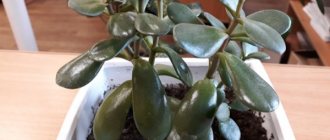Craspedia globulus
Craspedia became known to the world relatively recently. This plant is considered traditional to Australia, but about 30 years ago it spread throughout the world. The yellow spherical inflorescences resemble drumsticks in appearance and reach 3 cm in diameter.
The spherical craspedia is actively used when arranging bouquets, but it looks no less impressive in flower beds. Another advantage of the crop is that it develops normally on poor rocky soils and in swampy lowlands. It propagates by seeds, but it is better to plant seedlings in open ground. Then flowering will occur within a few weeks.
Thrift
Armeria is a herbaceous flowering perennial, up to 60 cm high and with bright pink inflorescences. Flowering lasts from late spring to late summer.
The crop can be planted either by seeds or seedlings. In the first case, sowing is carried out in the fall so that the planting material undergoes natural stratification over the winter. In the case of the seedling growing method, plants develop faster, and flowering occurs already in the current season.
Gazania
Due to its African origin, gazania is particularly resistant to drought.
The South African “treasure flower” amazes with its graphic design on its petals. Its second name is “flower of the sun”, it explains that the beauty of the plant can be fully appreciated only on a bright afternoon. At other times the inflorescences are closed.
Gazania is successfully bred in Russian latitudes. This is not difficult if you first grow seedlings from seeds. When choosing a place for gazania in a flower garden, you should pay attention to an open sunny area with light soil.
More information about growing this plant can be found in the material:
Primrose fine-toothed
A perennial plant with numerous inflorescences collected in dense balls. Depending on the variety, the buds can be white, purple, ruby or lilac.
Prefers to grow on light soils with a slightly acidic reaction. It is grown by direct sowing of seeds in the ground in the fall. During the winter, the planting material undergoes natural stratification, and green mass begins to grow. however, flowering occurs only 2-3 years after planting. In the future, the bushes can be propagated vegetatively (by division).
Kadupul - the most beautiful flower in the world
In Japan this flower is called "Beauty of the Moon"
This fabulous flower grows on the islands of Sri Lanka, where it is considered sacred. Seeing the virgin white buds of a kadupul is a great success, because flowering occurs rarely and lasts only two days, after which the plant regains its former appearance.
This flower has no price. It is impossible to pick it without damaging the petals. And for those who dream of having such a treasure, an analogue is recommended - epiphyllum. It is easy to grow, grows quickly and blooms in early summer.
Kadupul is the most expensive flower in the world - and this despite the fact that it has never been sold.
Mordovnik
The perennial herbaceous plant Mordovnik is valued not only for its decorative value, but also for the fact that it is a valuable honey plant. The crop grows well in any climate, and the intensity of flowering does not depend on the level of soil fertility.
The advantage of the plant is that flowering begins in May and continues until the end of June. The diameter of the inflorescences reaches 5 cm, and the petals are painted a pleasant blue color. In place of withered buds, fruits are formed - small cylindrical achenes. They can be sown in open ground.
- Author: Zimina Tatyana
Rate this article:
- 5
- 4
- 3
- 2
- 1
(0 votes, average: 0 out of 5)
Share with your friends!
Flowers starting with the letter A
Azalea is a symbol of femininity, fragility, meekness, restraint, devotion; but at the same time - passions and sadness. It is customary to give azalea before an unwanted separation. When presenting an azalea, you say “I hope you will wait for me,” “Take care of yourself for me,” “I believe you!” When a man gives this flower, he admits that you are the only one for him.
Acanthus (bear's paw) - art, inspiration, creativity. Acanthus is a very unique flower; it is not customary to give it to lovers. Such a gift says: “You are very talented and will achieve everything you want, go for it!”
Acacia (blooming) secret love, chastity, loneliness. Acacia is a flower of regret and recognition of one's mistakes. The one who gives the acacia says: “You are the best thing that happened in my life,” “Why aren’t we together now?”, “Let’s start all over again!”
Acacia (white) platonic love, “Why is my love not reciprocated?”
Acacia (yellow) “I’m sorry that love is gone”
Acacia (pink) elegance, charm
Aconite (ranunculus, buttercup) - sympathy, desire to please, invitation. Aconite can be given to both women and men. If such a gift is presented at the beginning of an acquaintance, most likely the giver is interested in you, considers you a pleasant interlocutor and offers friendship. An excellent gift for colleagues and business partners.
Alstroemeria is named after the Swedish botanist Baron Klas von Alstroemer. These South American flower seeds were among many collected by the baron on a trip to Spain in 1753. In the language of flowers it means “sweet”, “lovely”, the desire to make an unobtrusive compliment.
Ambrosia indiscreet hints, expectation of more. The giver of ambrosia says: “I’m waiting!”, “Be bold!”, “Let’s live for today!”
Amarylis is pride, inaccessibility, masculinity. If you want to hint to a man that he is more than just a friend for you, give him amaryllis.
Pineapple perfection. A pineapple in a bouquet of flowers is a sign of the originality of the giver. If you were given such a bouquet, rest assured that you are valued and understood.
Anemone sincerity, hope; but also joy, emotionality. Translated from the language of flowers, a gift of anemones means: “Why not?”, “I feel very good with you,” “Let’s have a party?”
Anthurium: courage, originality, passion. Anthurium is considered a predominantly male flower. A bouquet or composition with anthuriums will be an unforgettable gift for a husband or colleague, friend or boss... You can also give anthuriums to an extravagant lady, a kind of “vamp” if you want to tell her: “You are unlike anyone else, and this delights me!” »
Pansy air kiss, fun, entertainment, “I miss you!”
Aralia closeness, intimacy, “You are my dear!”
Asparagus simplicity, gullibility
Aster is a symbol of love, grace, sophistication, and also memories. In China, aster means precision. Ancient people believed that the smell of aster leaves, when burned, drove away snakes. Asters were placed in the graves of French soldiers, symbolizing grief and memory of the dead. There is a myth according to which asters were created from cosmic dust when the Virgin looked from the sky and cried. The poet Virgil believed that the altars of the gods were often decorated with asters. There are about 600 species of asters, the most popular variety being Monte Casino.
Astra (white) “I love you more than you love me!”, “Say that you love me again,” “I can’t think about anything but you...”
A
Apricot (flower) - timid love Azalea - fragile and fleeting passion Acacia - platonic love, hidden love Aconite / Fighter - misanthropy, poisonous words Aloe - wisdom, honesty Amaranth / Shchiritsa - loyalty Amaranth / Bathing suit - immutability Amaryllis - the charm of rural life, pride Ambrosia - Your love is reciprocated Anemone / Anemone - refusal, breakup Pansies - memories Orange flower - “Your purity is equal to your attractiveness” Armeria - sympathy Artemisia - a symbol of dignity Astra - elegance, a symbol of love.
Ablation - or rapprochement, is used when other methods of grafting fail. On the rootstock, on the opposite side of the trunk from the eye, a small section of bark is cut off. In the same way, a strip of bark is removed from the scion. Places with cut bark are connected, tied and covered with garden pitch. In this case, the scion is separated from the mother plant only after it has fused with the rootstock.
Abscisic acid is a plant hormone. Chemically, it is an isoprenoid. Induces and increases the dormant period, accelerates the formation of the separation layer when leaves fall, inhibits the growth of segments of stems and coleoptiles. Accumulates in autumn in seeds and buds. The level of abscisic acid in tissues depends on the ratio of its synthesis and breakdown (oxidation) or binding (glycosidation). The biosynthesis of abscisic acid and growth hormones - gibberellins - occurs from a common metabolic precursor - mevalonic acid. It is believed that there is a system for switching the pathways for converting mevalonic acid into abscisic acid or into gibberellins, regulated by an excess of one of these products.
Acaricides - from acarus - mite, - preparations that destroy herbivorous mites. Not to be confused with insecticides! Mites belong to the class of arachnids, the rest of the majority of flower pests (thrips, caterpillars, scale insects) belong to the class of insects, so insecticides do not affect mites. Moreover, very often, long-term use of the same drug causes the pest to become addicted, as a result, some individuals survive, reproduce and are not affected by the previously used drug. Therefore, when fighting ticks, it is recommended to alternate spraying with various preparations.
Axilla - from lat. axilla - armpit, is the sinus between the papillae in some genera of cacti. It is from the axilla that flowers, new shoots, spines (and modified spines - hairs) develop. Axilla is a growth point.
Actinomorphic flower - from the Greek. aktis - ray and morphe - form, - a regular flower, has more than two planes of symmetry (symmetry is determined by the perianth, most often by the corolla). Characteristic of many families of dicotyledons and monocotyledons. Actinomorphic flowers can be separate-petaled (in carnation, roseate, umbelliferae) or cleavage-petaled (in Solanaceae, bellflowers). They are often pollinated by insects, so sometimes actinomorphic flowers, like zygomorphic ones, develop various devices for pollination by specialized pollinators (scales in the pharynx, a very long corolla tube, etc.).
The androecium is the collection of stamens on a flower.
Apex - from Latin apex, genus. n. apicis - top. This is the tip of the shoot and root, consisting of the primary meristem, which ensures the formation of all parts and primary tissues of the shoot. At the apex of the shoot, protrusions are formed - tubercles or ridges (leaf primordia), the so-called. leaf primordia. The root apex is always smooth.
At the apex of the shoot, only the cone remains smooth. The shape and size of the apices can be different not only in different species, but also in one plant or an individual shoot at different periods of its morphogenesis. The classification of apices has not been developed. They are usually divided into 3 types: with one initial cell of the apical meristem (ferns), with several initials in one layer (gymnosperms), with several initials in two or more layers (most flowering). Often the terms “shoot apex” and “root apex” are used synonymously with the term “apical meristem”. The apex is often called the growth cone.
Area - from lat. area - area, space, - part of the earth's surface (territory or water area), within the swarm the given taxon (species, genus, family, etc.) is distributed and goes through the full cycle of its development. The area is as integral a part of the characteristics of a taxon as its morphology and its ecological features. The space in which the formation of a species occurs is called the primary area. The formed area can then expand as a result of resettlement or decrease due to the extinction (or destruction) of the species in part of the space inhabited by it.
Arilus - from lat. arillus - mantle, auricle, roof. Typically a fleshy structure that occurs in many plants on the seed or peduncle and partially or completely covers the seed. Arillus tissues usually contain sugars and oils. Arillus promotes the dissemination of seeds by animals, for example, ants (celandine), wind, water, sometimes the opening of the fruit (nutmeg), and the separation of the seed from the placenta (broom). False Arillus (arylloid) arises from integument tissue and, when growing, does not cover the micropyle. This is either a small outgrowth in the area of the micropyle (euphorbia, istod, boxwood) - a caruncle, or a glandular outgrowth along the seed suture (celandine), or in the area of the achene - strophiole. Mature Arillus is often brightly colored (yew, euonymus).
The areola is a modified bud, which is a growth point, characteristic only of representatives of the cactus family. By the same principle as ordinary plants have apical and lateral buds, a cactus has an apical areole, the so-called axilla, and lateral areoles. Many cacti are capable of stopping the growth of isaxilla at a certain moment and begin to develop shoots from the lateral areoles. This ability is genetically assigned to certain plant species. This is why mammillaria “babies” form so easily, and cerius grow literally in a column. It is from the areoles that cactus spines grow and flowers appear.
Assimilation is the process of formation of chemical substances through the processes of photosynthesis.
Auxins - from the Greek. auxano - increase, grow - plant hormones and indole derivatives. They are formed in apical meristems and stimulate cell elongation. One of the most common auxins is beta-indolyl-3-acetic acid (IAA), or heteroauxin, the biochemical precursor of which is tryptophan. Auxins stimulate the growth of coleoptiles (a hollow cylindrical structure surrounding an unexpanded leaf in a monocot seedling), stems, leaves and roots, cause them to bend, and also enhance the formation of roots in cuttings. The action of auxins facilitates the elongation of a growing cell under the influence of turgor pressure. Auxins also enhance cell reproduction in callus cultures (see callus) and during the formation of adventitious roots in cuttings. In combination with cytokinins, vinegar stimulates cell differentiation and induces root formation in tissue culture.
An acyclic flower is a spiral flower, all of whose elements (tepals, stamens, carpels) are arranged in a spiral. The receptacle is usually convex, often conical. Acyclic flowers are characteristic of primitive flowering plants, mainly polycarpids (magnolia, ranunculaceae, etc.). Acyclic flowers are usually actinomorphic, less often zygomorphic (monkshood, larkspur). From A. c. hemicyclic and cyclic flowers developed.
Aerophytes - from the Greek. aer – air, are “air” plants that receive all the necessary nutrients from the atmosphere. Aerophytes include epiphytes, as well as some mosses that live on the trunks and branches of trees (and even on leaves), a very few algae that live on the bark of trees, and some lichens.










